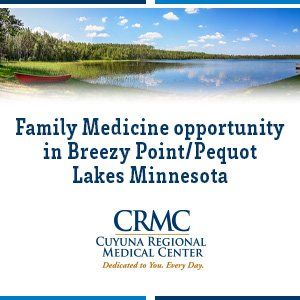rguably, the most significant and underappreciated health policy response to the COVID-19 pandemic is quietly coming to an end and creating the potential for the largest increase in uninsured residents in Minnesota’s history. Minnesota’s physicians, as well as health care employees from clinic receptionists to finance office staff members, should prepare to help approximately 1.5 million Minnesotans who receive health coverage through the state’s Medical Assistance (Medicaid) and MinnesotaCare programs avoid losing coverage entirely.
cover story one
Trouble Ahead
Medicaid disenrollment looms
By Matthew L. Anderson, JD
Early in 2020, Congress saw the importance of ensuring that as many people as possible had uninterrupted health coverage, especially for purposes of making testing and treatment of COVID-19 widely available across the population. The Families First Coronavirus Response Act (FFCRA) offered enhanced federal financial support of Medicaid programs if states agreed to keep people continuously enrolled in coverage through the end of the federal public health emergency. Like every other state in the country, Minnesota acted quickly to adjust our Medicaid and MinnesotaCare programs to stop conducting almost all annual eligibility renewals or otherwise ending coverage for people enrolled in Medicaid or MinnesotaCare.
As a result, state, county and Tribal Nation employees and state public program enrollees have not gone through the eligibility renewal process for three years.
Record Low Numbers of Uninsured Minnesotans
Largely because of the continuous enrollment policy, the number of Minnesotans enrolled in Medicaid and MinnesotaCare increased significantly since 2019. According to the Minnesota Department of Human Services (DHS) “Renew my Coverage” webpage, the number of residents enrolled in the Minnesota’s health coverage programs grew by 28% to approximately 1.5 million. And conversely, according to the Minnesota Department of Health, the percentage of Minnesotans without health coverage dropped to only 4% in 2021 -- lower than in any year since 2007 or longer.
The number of residents enrolled in the Minnesota’s health coverage programs grew by 28%.
For residents who are financially and/or medically vulnerable, these gains in coverage brought greater access to care – not only coverage for COVID-19 testing and treatment, but also comprehensive coverage for physical care, mental and behavioral health services, substance use disorder treatment, dental care, and prescription drugs. Health coverage also provided more economic security and stability.
For Minnesota’s physicians and other health care providers, these federal and state policy changes secured an important source of payment. Per DHS data, Medicaid and MinnesotaCare provide reimbursement for approximately 40% of all births, health coverage for 40% children living in Minnesota, and pay for approximately 50% of all nursing home care and substance use disorder treatment.
According to DHS, before the pandemic in 2019, Medicaid and MinnesotaCare paid approximately 21 million claims to physicians and other individual health care professionals. These state public health coverage programs accounted for 25% of all health care spending according to the Minnesota Department of Health.
With 330,000 more residents enrolled in these programs today, in part due to the continuous enrollment policy, the number of claims paid to physicians and other health care professionals, as well as the proportion of health care spending from state public health coverage programs are likely even higher.
Financial Impact
While higher enrollments in Medicaid and MinnesotaCare naturally result in additional state spending on the programs, this increase in spending is more than offset by the enhanced federal funding Medicaid programs have received during the COVID-19 public health emergency. According to the Minnesota Department of Management and Budget’s (MMB) analysis, the continuous coverage policy increased state spending by an estimated $200 million per year, but the state receives approximately $950 million more per year in enhanced Medicaid funding from the federal government. Accordingly, this enhanced federal Medicaid funding has contributed to Minnesota’s historic budget surplus.
In the last days of 2022, Congress passed the Consolidated Appropriations Act, which included provisions ending the continuous enrollment policy on March 31, 2023. Consequently, states are preparing to restart their eligibility renewal processes. DHS expects to begin sending notices to the first group of enrollees in April with decisions about their renewals being completed by July. According to the department’s plans, all Medicaid and MinnesotaCare enrollees will have their eligibility renewals processed by the end of June 2024.
The renewal process requires enrollees to submit documentation and complete the forms necessary to demonstrate they remain eligible for public health insurance programs. DHS will send enrollees notices letting them know when they will receive renewal paperwork and explaining the next steps in the process. State, county, and Tribal Nation employees will review the documentation submitted by employees and determine if their coverage will be renewed or end.
Each month, DHS expects renewal determinations to be made for approximately 60,000 enrollees, with even larger volumes needing to be processed during the last quarter of 2023 when MinnesotaCare enrollees need to apply if they want coverage in 2024.
Accompanying the end of the continuous enrollment policy, the Consolidated Appropriations Act established a schedule for reducing the enhanced financial support state Medicaid programs received over the past three years. In its updated budget forecast, which will be released in early March, MMB will account for the phase out of both the additional costs associated with the continuous enrollment policy and the gradual loss of enhanced federal funding.
DHS described restarting the renewal process after three years and with 28% more enrollees as “a significantly larger volume of work than has ever occurred in the state’s public health care programs’ history.” It also poses the risk of causing the largest increase in residents without health coverage in decades.
Maintaining Coverage
Before the COVID-19 pandemic, people often lost coverage during the renewal process. Naturally, some people lost coverage because they were no longer eligible for Medicaid or MinnesotaCare. Many people, however, lost coverage even though they remained eligible to keep their coverage in the programs. Loss of coverage could result from, for example, failing to receive notice of the need to re-enroll because of a change of address, not completing the necessary paperwork, or missing some of the documentation necessary to demonstrate income or disability status. In other words, people eligible to remain in Medicaid or MinnesotaCare lost their health coverage even when the renewal requirements were expected, routine, and involved state, county and Tribal Nation employees processing many fewer applications each month.
According to DHS, “Minnesota’s public health care programs have complex, paper-based renewal processes,” and successful re-enrollment requires collaboration of state, county, and Tribal Nation employees who process renewals, as well as navigators and individual enrollees.
The Kaiser Family Foundation estimates that before the continuous coverage policy more than 10% of Medicaid enrollees lost coverage each year even though they likely remained eligible. Using today’s enrollment figures, this means we could expect 150,000 residents who continue to experience significant economic and medical vulnerability will lose their health coverage in the next year as the eligibility renewal process is restarted.
The loss of health coverage has impacts throughout the health care system.
DHS, however, anticipates that an even larger portion of enrollees might lose their coverage. “Enrollees likely experienced many changes in the last three years that will complicate their renewal and make it harder to get in touch with them, including moving, changing jobs or experiencing an illness.”
All 1.5 million Minnesotans enrolled in Medicaid and MinnesotaCare, most of whom have no experience with the re-enrollment process, will need to document their ongoing eligibility for public health programs or they will lose the health coverage they rely on for access to physician services and other clinical care.
Moreover, just as most Medicaid and MinnesotaCare enrollees have no experience navigating the re-enrollment process, many state, county, and Tribal Nation employees who will shoulder the burden of processing a dramatically larger number of renewal applications each month have no experience administering the renewal process because they started their jobs during the public health emergency. Even employees with experience are out of practice.
Consequently, the U.S. Department of Health and Human Services estimated that ending the continuous coverage policy could result in 15 million residents across the country losing health coverage. The Department further estimated that 6.8 million of those who lose coverage will do so despite continuing to meet eligibility criteria for keeping coverage.
As a result of reinstating the eligibility renewal process, it is possible that Minnesota’s historically low rate of residents without health insurance could jump from 4% to more than 6% over the next 12 to 18 months. With each percentage increase in the state’s uninsured population, the health care system as a whole experiences lower utilization of physician services, especially primary and preventive care services, and increased strain on higher-cost emergency department services. In addition to the health consequences resulting from delayed or never diagnosed and treated health conditions, individuals losing health care coverage experience greater stress and anxiety. Even when they receive care from an emergency department, they may leave the hospital with health care debt that takes years to repay and keeps them from building financial security.
The loss of health coverage has impacts throughout the health care system. Because a large majority of those who will lose coverage receive their benefits through Medicaid managed care arrangements, managed care organizations and county based purchasing plans will lose capitation payments when their enrollees lose coverage. In addition, they may bear higher costs when enrollees’ health conditions grow more acute during gaps in coverage because of delayed or missed primary and preventive care.
Physicians and clinics can also expect to lose revenue as previously covered patients forego routine and low-acuity care after losing public health coverage. Conversely, federally qualified health clinics, who provide an array of integrated primary care and outpatient services to people who are uninsured on a sliding-fee scale basis, may experience higher patient volumes and, as a result, greater staffing challenges.
To minimize the likelihood of residents who remain eligible for Medicaid or MinnesotaCare from losing coverage, DHS began outreach efforts encouraging enrollees to update their contact information. While official notices for renewals will be sent through U.S. mail, the department will attempt to raise enrollees’ awareness of the renewal process through social media, text messages, and other communication avenues, as well as through efforts of counties, Tribal Nations, navigators, health plans, and community-based organizations.
How You Can Help
Physicians, clinics, hospitals, insurers and other health care stakeholders can help mitigate the loss of coverage for Minnesotans who remain eligible for Medicaid and MinnesotaCare. Encourage patients, as well as family members, friends and co-workers, to update their contact information, including their mailing address and phone number, with their county or state. In addition, they can get more information about the renewal process and sign up to receive email alerts when new information is available at the Minnesota Department of Human Services’ “Renew my Coverage” webpage: mn.gov/dhs/renewmycoverage.
In helping raise awareness among patients, family members, friends and neighbors, avoid making assumptions about an individual’s source of health coverage.
Approximately 80% of Minnesota’s Medicaid and MinnesotaCare enrollees receive their benefits through managed care organizations, and therefore, may appear to have commercial insurance coverage.
While people over age 65 may be enrolled in Medicare, many also receive important health coverage through Medicaid.
Minnesota’s Medicaid and MinnesotaCare enrollees are almost evenly split between the Twin Cities metropolitan area and Greater Minnesota.
One family member might qualify for public health coverage while other family members are enrolled in an employer-sponsored or individual health plan. Some people qualify for Medicaid coverage even though they are enrolled in their employer’s health insurance plan.
Emphasize the importance of watching for and responding to notices from the DHS arriving via U.S. mail, as well as information they might receive from the department or their county, Tribal Nation, or health plan.
Refer patients and others to the DHS dedicated webpage (mn.gov/dhs/renewmycoverage) for more information about the renewal process.
Post or provide copies of downloadable and printable materials about the renewal process available from DHS. In addition to English, these resources are available in Spanish, Somali, Hmong, Vietnamese, and Russian languages. (https://mn.gov/dhs/renewmycoverage/communications-toolkits/)
While the end of the continuous enrollment policy and reimplementation of the Medicaid and MinnesotaCare renewal processes will be disruptive for some enrollees, physicians can help their patients keep their coverage or transition to private insurance. In addition to encouraging patients to watch for and respond to renewal notices, physicians can refer patients to the DHS website and resources, as well as to their health plan, for more information about the renewal process and how to prepare for it. For patients who are ineligible to remain enrolled in Minnesota’s public health coverage programs, physicians can encourage them to look into whether their employer offers affordable coverage, explore coverage options and subsidies available at www.mnsure.org, or seek assistance from a navigator.
While the end of the continuous coverage policy presents daunting challenges, it also affords an opportunity for open discussions about the importance of health coverage. By asking every patient about their source of coverage; encouraging people to watch for and respond to notices from DHS and their health plan; and providing information about enrollment in Medicaid, MinnesotaCare, employer-sponsored plans, or potentially subsidized plans available through MnSure, Minnesota’s physicians can not only help prevent unnecessary loss of health coverage, but also build a stronger relationship and sense of trust with their patients.
Matthew L. Anderson, JD, is a senior lecturer in the Health Policy and Management Division of the University of Minnesota’s School of Public Health and a freelance consultant. He previously served as Assistant Commissioner for Health Care and State Medicaid Director at the Minnesota Department of Human Services.
MORE STORIES IN THIS ISSUE
cover story one
Trouble Ahead: Medicaid disenrollment looms
By Matthew L. Anderson, JD
cover story two
Health Care Prebunking: Can people be immunized against disinformation?




















